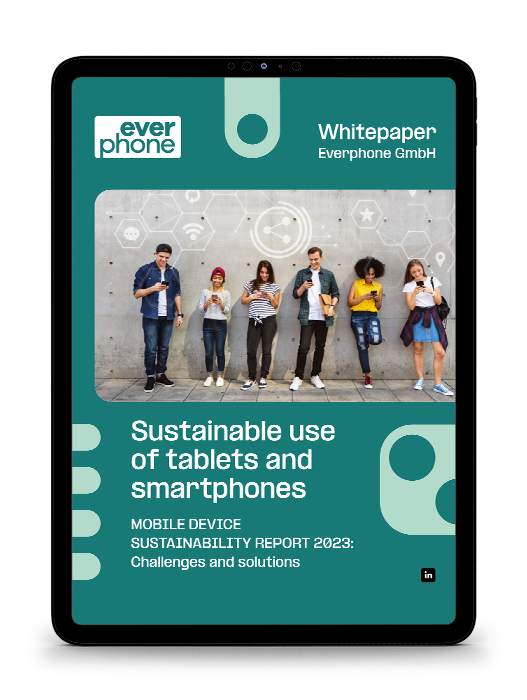Internal memory
Our glossary explains basic terms and abbreviations relating to mobile working, the use of smartphones and tablets in the corporate environment (Enterprise Mobility) and security aspects in the use of mobile devices.
Internal memory (flash memory)
Component for data storage in the smartphone
The internal memory of smartphones and tablets is the component used for storing and backing up user data and system data. The internal memory should not be confused with the working memory.
So-called flash memories are used, which are digital memory modules that store data even without the device’s power supply and are therefore categorized as “non-volatile” memories.
The flash components contain a memory block and a microcontroller. They have no moving parts and therefore cannot be damaged by shock, which is very advantageous for a mobile device for obvious reasons.
How much internal memory fits in a phone?
From the user’s point of view, the size of the internal smartphone memory is an important criterion when choosing a device.
Actual free memory
The size of the internal storage is indicated in gigabytes (GB), in rare cases like the Samsung Galaxy S10 also in terabytes (1 TB = 1,000 GB).
Since part of the internal storage is occupied by system files and the operating system, users usually have less storage than the manufacturer’s specifications suggest. An iPhone 11 with 256 GB of internal storage actually has about 248 GB available, since the rest is occupied by the mobile operating system and applications.
Memory expansion
Since the usable internal memory is an enormously important criterion for users, the configuration of smartphones and tablets is a purchase-deciding factor. Nothing is more annoying than having to deal with a constantly overfilled memory.
The smartphone manufacturers offer different approaches: Apple has a very restrictive memory policy. Usually, several storage variants are available, but the additional storage space has to be paid for (roughly 1 euro per GB).
Android manufacturers usually offer several storage variants as well, but often allow the use of a microSD card for storage expansion. Thus, the internal storage can be expanded cost-effectively and variably and can be used in the subsequent model if necessary.
You should check the manufacturer’s specifications before buying a microSD card: How much memory is supported by the smartphone? It is common to expand the internal storage up to a maximum of 512 GB (as of 2023).
Lifetime of the internal memory
The lifespan of the internal memory is limited and is specified in erase cycles. Depending on the memory architecture, a maximum of two million write and erase cycles are possible. After that, the flash module becomes unusable and a new device has to be purchased.
Common sizes of internal smartphone memory
Devices with a memory smaller than 16 GB are virtually no longer in use today (2023) and are obsolete. Smartphones and tablets feature tiered sizes of 16 GB, 32 GB, 64 GB, 128 GB, 256 GB, 512 GB or 1,024 GB. The latter corresponds to a terabyte. The storage sizes are continuously increasing because the file sizes of photos and videos are also continuously growing.






